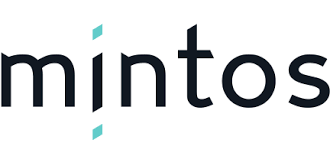You can earn a cashback up to 4% on selected GetBucks loans on Mintos p2p lending marketplace
GetBucks is the most recent loan originator to offer cashback for long-term investments on Mintos peer-to-peer lending marketplace! You can now earn a cashback of up to 4% for investing in GetBucks loans with a maturity of one year or more. You can get a cashback of:
- – 1% for investing in GetBucks loans with a maturity of 12 to 23 months;
- – 2% for investing in GetBucks loans with a maturity of 24 to 35 months;
- – 3% for investing in GetBucks loans with a maturity of 36 to 47 months;
- – 4% for investing in GetBucks loans with a maturity of 48 months or more.
This offer is only for a limited time, you have until April 13, 2018, to participate in the GetBucks cashback campaign. The company offers to invest in loans issued in Poland, Botswana, Kenya, and Zambia.
If you want to receive the cashback on your investments, you need to be enrolled in the campaign before making the investment. Only investments made on the Mintos primary market qualify.
GetBucks was the first loan originator on Mintos to offer investment opportunities in Africa. The company joined Mintos in June 2017, and investors have since funded more than EUR 4.9 million worth of GetBucks loans on Mintos. The average weighted net return for investors has been 10.5%. GetBucks offers personal and short-term loans from Botswana, Kenya, Poland and Zambia in euro (EUR) on the Mintos marketplace.
GetBucks is the leading fintech company in Africa, with a net loan portfolio in excess of EUR 92 million. Since its inception, the company has disbursed more than EUR 380 million in loans. GetBucks is part of the Luxembourg-registered, Frankfurt-listed MyBucks Group, which was awarded the “Best EU Financial Inclusion Company” in the 2017 edition of the European fintech Awards.
Speakers from GetBucks will be joining Mintos on March 22, 2018, for a webinar where the CEO and Corporate Finance Executive of MyBucks will reveal the latest financial data for the MyBucks Group, showcase the immense investment opportunities available in Africa and also reveal the future plans for the company and group. Be sure to stay tuned for upcoming information on the webinar.
FAQ
When will I receive my cashback?
The cashback will be transferred to your Investor’s Account on Mintos within six working days from the day you make the investment.
What will happen if the loan originator will re-buy my long-term investment?
Sometimes loan originators re-buy the loans before their maturity. If this happens, you will get to keep your cashback.
Do I need to enrol each time I make a new investment?
No. To participate in the campaign, you need to enrol only once. All investments made after that will qualify for cashback.
Do investments made prior to enrolling in the campaign, qualify for cashback too?
No. Only new investments made after you have enrolled in the campaign on your Investor’s Account qualify for a cashback.
Why would I want to invest in long-term loans?
Investing long-term has many benefits. The returns offered for these loans generally are higher than returns offered on short-term loans. You get to lock-in these higher return rates for a longer period of time, thus avoiding any cash drag effect. Including longer-term loans in your investment portfolio also means better diversification in terms of loan types and borrower profiles.
For other bonuses visit our Cash-back & Bonuses page.

